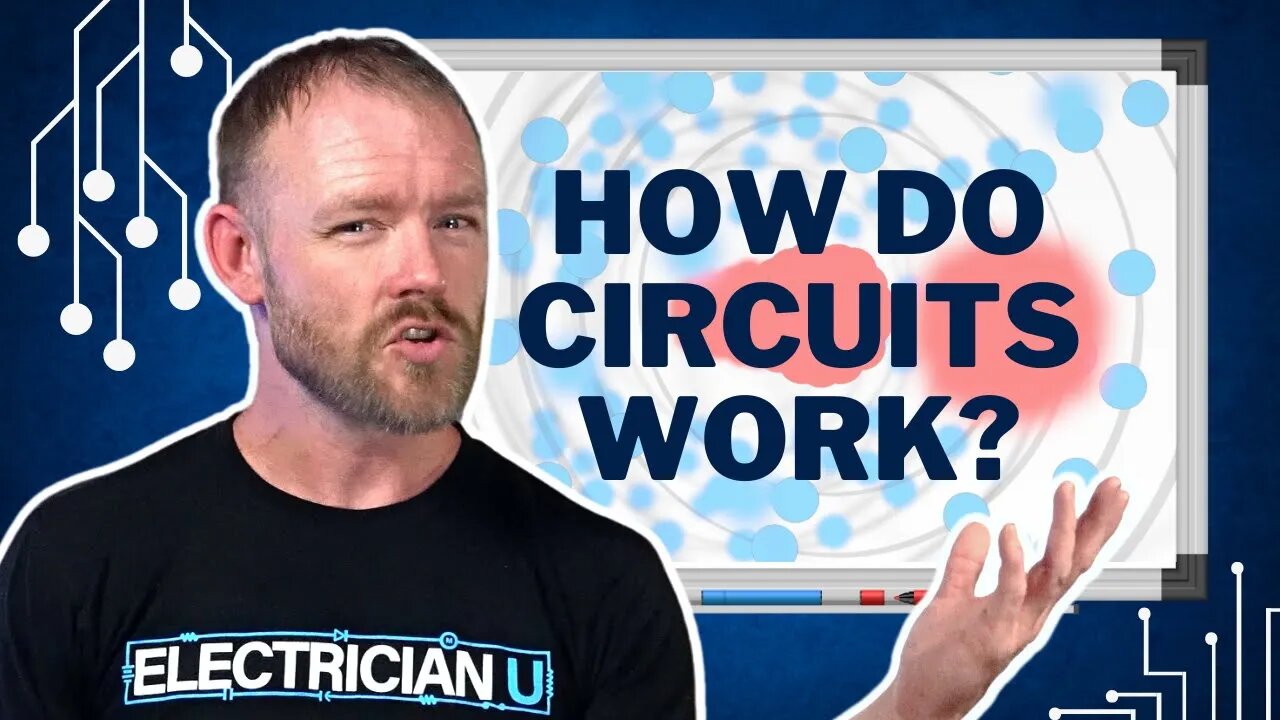Premium Only Content

How Do Circuits Work? Volts, Amps, Ohm's, and Watts Explained!
What is a circuit and how does it work? Even though most of us electricians think of ourselves as magicians, there is nothing really magical about electricity!! In the latest episode of Electrician U, Dustin explains the theories behind how a circuit actually works and the basic principles of electricity.
🤘⚡️MEMBERSHIP⚡️🤘
JOIN ELECTRICIAN U - become a member and get:
FREE Continuing Education every year
FREE Practice Exams
FREE Monthly Video Courses
FREE Weekly Live Instructor-Led Classes
FREE Monthly Educational Newsletter
Premium Members-Only Content
Private Discord Channel
Monthly Members-Only Discord Chats
Sign up here --- https://www.electricianu.com/electrician-u-membership/
🎧🎹MUSIC AND VIDEO:🎹🎧
https://www.facebook.com/descantmv
🎬✍️ART AND ILLUSTRATION:✍️🎬
https://www.daverussoart.com
On a basic level, there are 4 distinct principles that govern how a circuit and electricity actually work. Volts, Amps, Watts, and Ohm’s (or resistance). Each one plays an important role in the flow of electrons within a conductor and can change how the overall experience is perceived.
First let’s discuss volts. Volts relates to pressure. This PRESSURE is what moves things along. On one end of a circuit, somewhere, there is a generator that is creating this pressure. The other end (which we will discuss momentarily) is using that pressure to be useful. Voltage can come in several different amounts. The higher the voltage the more the pressure. 12 volts is much less than 120 volts, which is much less than 480 volts. The lower the voltage the more you risk not having enough pressure to operate a higher quantity of loads or go as far in distance. One reason we use higher voltages for those situations.
What we are actually pushing with that pressure is current and that is measured in AMPERES (amps). Think of amps as flow. How much is actually going thru the circuit. So, amps can be thought of as how much is flowing thru the circuit per second. The smaller the amount, the less the amperage. Some equipment requires more amps to operate (motors, large light bulbs, etc.). Water can be a good analogy to use when discussing parts of electricity (even though the two REALLY shouldn’t be put together!!). While water pressure could be used to describe VOLTS, the flow rate (or gallons/liters per minute) can be used to describe AMPERAGE.
The next part of the puzzle is resistance. If we were to hook up a wire straight in between a hot and a neutral, there would be an infinite amount of current allowed to flow as there is no resistance to slow it down. This would end in a rather catastrophic event! So, resistance slows down the rate of current flow to a more manageable/useful rate. Remember, for a circuit to work, it must be a complete loop. So a resistive load completes the loop enough for current flow to slow down to a useful rate, but not great enough to create a short circuit! Take a light bulb for instance. One side of the lamp is connected to one end of a filament while the other side is connected to the other. When power is applied, the filament glows, slowing down the rate of current flow but completing the circuit.
The last part to discuss is wattage. Think of wattage as power consumption. How much work is being performed. Take a toaster for example. We need wattage to toast our bread. The resistive elements get hot from current flow/resistance. That power consumption is measured in watts. The higher the watts for our toaster, the hotter it will get and faster it will toast our bread.
We hope this has been insightful into how a circuit works and the different basic components of them. Is there a topic you would like to see discussed? Leave a comment in the comments section below and let us know. Please continue to follow Dustin and Electrician U as we are constantly adding new content to assist our followers in becoming the best they can be!
-
 0:56
0:56
Electrician U
1 year ago90° Drill Attachment!!! - What Hand Tools Are YOU Missing
5.57K1 -
 1:10:49
1:10:49
Vigilant News Network
2 hours agoRFK Jr. Drops a Stunning Announcement | The Daily Dose
14.9K3 -
 49:49
49:49
Candace Show Podcast
5 hours agoEXCLUSIVE: Blake & Ryan’s Desperate Legal Strategy Exposed! | Candace Ep 147
115K71 -

2 MIKES LIVE
3 hours ago2 MIKES LIVE #180 with guest Kyle Rittenhouse!
12.3K -
 9:40
9:40
Tactical Advisor
8 hours agoBest Home Defense Shotgun Build | Genesis Gen 12
13.2K -
 56:44
56:44
VSiNLive
5 hours ago $2.84 earnedFollow the Money with Mitch Moss & Pauly Howard | Hour 1
45.4K1 -
 1:05:48
1:05:48
The Amber May Show
8 hours ago $1.66 earnedBig Balls | You Know It's Bad When Legacy Media Reports On Big Balls | Sam Anthony
21.1K5 -
 LIVE
LIVE
SoniCentric
1 day agoEnjoy a COZY Valentine's Day Escape to Paris with the BEST blend of Romantic Music
100 watching -
 1:59:52
1:59:52
Revenge of the Cis
6 hours agoEpisode 1447: Love Train
51.2K6 -
 1:03:34
1:03:34
In The Litter Box w/ Jewels & Catturd
1 day agoCONFIRM KASH NOW! | In the Litter Box w/ Jewels & Catturd – Ep. 742 – 2/14/2025
73K51